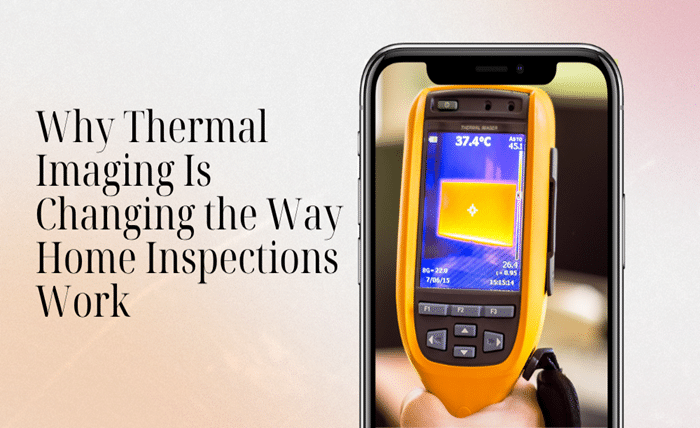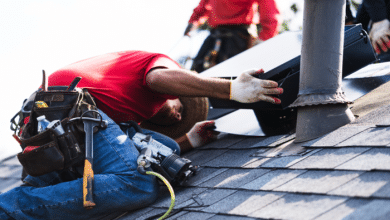
Why do standard inspections miss some home issues? Inspectors often overlook the damage that hides behind walls or under floors. A thermal imaging home inspection uses heat-sensing technology to reveal leaks, insulation gaps, and other hidden problems. This method helps you catch issues early and avoid costly repairs. Keep on reading to see how it works.
Finds Hidden Problems Fast
Thermal imaging allows inspectors to identify hidden issues without opening walls or ceilings. Using this method, inspectors frequently detect the following:
- Moisture behind surfaces, which may lead to mold or material damage
- Heat loss near windows, doors, or insulation gaps indicates energy inefficiency
- Electrical hot spots in outlets or panels that may signal overheating or faulty wiring
During a thermal imaging home inspection, professionals can quickly locate these issues without disrupting the home. These are the benefits:
- Reduces inspection time by identifying exact areas needing attention
- Eliminates unnecessary damage to drywall or finishes
- Helps homeowners prioritize needed repairs with visual evidence
Thermal imaging adds accuracy and efficiency, making it a valuable part of a thorough inspection.
Makes Inspections More Accurate
Traditional inspections rely on visual cues, but many problems remain hidden behind walls or under floors. That’s where thermal imaging adds value by revealing temperature changes that indicate potential issues. The following benefits show how this approach increases accuracy:
- Reveals heat differences behind surfaces, which may point to leaks, pest activity, or insulation gaps.
- Highlights unusual temperature patterns that help locate moisture or airflow problems.
- Identifies cold or hot spots linked to missing insulation or inconsistent HVAC coverage.
- Enables non-invasive checks, reducing the need to cut into walls during inspections.
In addition, by using advanced home inspection technology, inspectors can easily do the following:
- Pinpoint problem areas with greater precision.
- Offer more precise recommendations for targeted repairs or upgrades.
- Help homeowners make informed decisions based on accurate data.
Thermal imaging strengthens inspection by making hidden problems easier to detect and address.
Helps You Avoid Expensive Repairs
Minor issues can escalate quickly when left undetected. A thermal imaging home inspection uses infrared technology to reveal hidden problems inside walls, ceilings, and floors. The following are examples of what this method can uncover:
- Roof leaks form above ceilings or in attics before they cause visible damage.
- Overheated electrical wires may lead to safety hazards if ignored.
- Missing or damaged insulation that affects energy efficiency and indoor comfort.
Catching these problems allows homeowners to act quickly, reduce repair costs, and protect long-term home value.
Improves the Final Report
A detailed report is essential for buyers and sellers to make informed decisions. During a thermal imaging home inspection, inspectors often include images that highlight the following:
- Confirm hidden issues like moisture, poor insulation, or overheating electrical components.
- Highlight temperature differences that may indicate air leaks or water intrusion.
- Provide visual context for findings that might otherwise seem unclear.
Including thermal images in inspection reports offers the following benefits:
- Buyers and sellers understand the exact location and scope of the issue.
- Support repair estimates with clear visual evidence.
- Build confidence in the overall inspection process.
Ultimately, this added layer of documentation makes the final report easier to interpret and more valuable during negotiations.
Becoming the New Normal
Home inspection technology today is more advanced than ever. It shifted from simple visual checks to more data-driven evaluations. The following points demonstrate how inspections are changing:
- Inspectors regularly use thermal imaging, moisture meters, and other tools to detect hidden concerns inside walls, ceilings, and floors.
- These devices help identify early signs of moisture intrusion, electrical issues, or insulation gaps that traditional methods might miss.
At the same time, homebuyers are becoming more informed and selective. It may lead to results such as:
- They expect a detailed assessment that goes beyond surface-level observations.
- Transparent, accurate reporting supported by home inspection technology gives them the confidence to move forward with a purchase or negotiate repairs when needed.
Technology is essential to thorough and reliable inspections as the market shifts—a bonus and the new baseline.
Upgrade Your Home Inspection!
Thermal imaging helps inspectors find more issues faster and more accurately than traditional tools. It’s a practical upgrade in home inspection technology that gives a clearer picture of what’s happening behind walls and under surfaces. Schedule a thermal imaging home inspection in Philadelphia during your next property assessment to protect your investment and avoid surprises. Upgrade from outdated methods to more reliable options.





